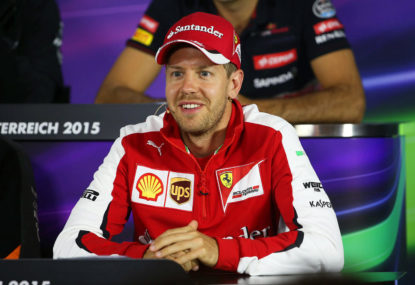Chinese Grand Prix talking points: Stroll has become the most hated F1 driver in a long time - but that's simply an unfair call!
The absolute vitriol against the Canadian that has come from the incident is beyond reprehensible.

“This is the circuit, and if they don’t like it, they can go home,” Bernie Ecclestone said, delicately addressing concerns raised by some drivers about the safety of the freshly minted Baku City Circuit.
Tensions were raised over the ‘European’ Grand Prix weekend as the sport tried on its newest racing venue, and whether it was because the race was run alongside a UNESCO-listed castle or because the outrageously long straight was eliciting speeds in excess of 370 km/h, the fit wasn’t to the satisfaction of everyone.
“We work so hard on safety, improving circuits all the time, and we come here and we have corners like T3, T7 and T14 that don’t have any runoff at all,” Formula One elder statesman Jenson Button said, one among a number of concerned drivers.
“There is not much you can do. It is a shame really.”
It was a short-lived emotion, however, and after sampling the track at speed even the dissenters found themselves praising the circuit.
“I think the circuit is pretty cool,” Daniel Ricciardo said, representing the optimists. “It’s definitely as tight as it looks and has a lot of corners unlike any others on the calendar.
“Being a street circuit, if you want to be quick, you need to find the limit and get close to the walls … some of the corners are pretty challenging.”
‘Challenging’ was indeed the string that bound all the commentary together.
“It’s a real challenge,” Lewis Hamilton said, while Valtteri Bottas called it “one of the most challenging tracks on the calendar”.
Sergio Perez described it as “really challenging, no margin for error”, Sebastian Vettel suggested it was “quite challenging”, and Carlos Sainz went so far as to call it a “fun challenge”.
Besides the use of the c-word being indicative of the vice-like grip of public relations on sporting vocabulary, drivers were evidently in agreement that the difficulty of the circuit was, in the end, a positive rather than a negative.
Indeed, given the chance to be more expansive Vettel elaborated his praise of the track at this week’s FIA Sport Conference.
“I think racing should keep its core pillars,” he said. “Speed is one essential one. The sensation of the speed … is incredible, and I think that has remained one of the main pillars throughout.”
If there’s one thing the Baku City Circuit has in spades, it’s speed – so much so that designer Hermann Tilke theorised it to be the fastest street circuit in the world. But there’s another essential element playing a part.
“To some extent the ingredient of danger [is a pillar] as well, because that’s what makes it also exciting,” Vettel continued, predictably grabbing headlines.
“Just coming from Baku last week, the circuit got a lot of criticism for being too dangerous. I disagree. It is fantastic. It is a spectacular venue – there is very little room for error, and that is what makes it so exciting.”
Is danger, that no-go word of the modern day, what gives Formula One its magic?
“I think that’s what made [Formula One] exciting in the past and what still makes it exciting today,” the four-time world champion said.
This is the battleground for Formula One. In a calendar increasingly soaked in circuits like Yas Marina, which is more runoff than race track, the narrow and risky streets of Baku can make all the difference.
But before lambasting the idea of injecting danger into Formula One as an ideological backwards step, let’s consider what we’re actually talking about.
Danger – perhaps more precisely called risk – does not mean drivers, the heroes and icons of the sport, should be injuring or killing themselves for entertainment every other weekend, and nor does it mean the FIA should be relaxing its attitudes towards beefing up car and circuit safety.
Instead, risk is Lewis Hamilton or Max Verstappen turning into a corner too early and eliminating themselves from qualifying, it’s Ricciardo or Perez gently wiping a corner of their cars because of the camber of the circuit, and it’s Kimi Räikkönen missing his braking point and nudging the outside of a hairpin.
In sum, it is the increased chance of a driver making a mistake that costs them competitively.
Risk and safety ought to go hand in hand – as the FIA makes strides in securing race tracks that may have in some previous time been too hazardous to contemplate, the opportunities for elite drivers to race on them ought to proliferate.
Look no further for evidence of this than the GP2 support races in Azerbaijan. On the one hand, it featured what former series commentator Will Buxton described as “genuinely some of the worst driving I’ve ever seen”, while on the other hand, the only damage sustained by any driver was reputational.
For Formula One risk must be a balancing act – the danger to the driver must be whittled down while leaving intact the driving challenge.
“I think you need to find the right compromise,” Vettel concluded. “The ingredients of passion, of speed, of danger, of noise, are very important. Equally, we want to make the sport safer. That’s the right approach.”
The question now is whether a weekend in the self-proclaimed European city of Baku has reinvigorated the sport’s lust for a driving challenge.
Follow @MichaelLamonato on Twitter.